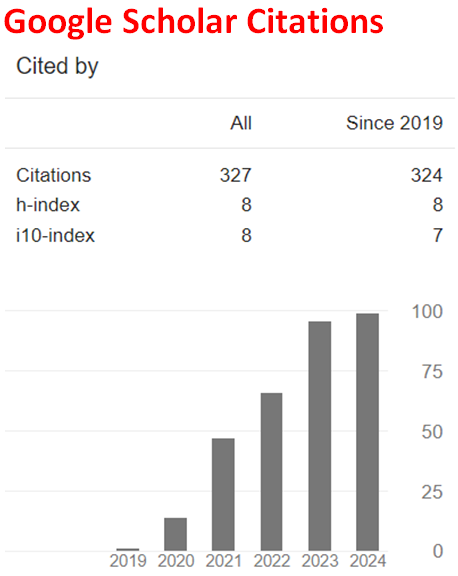Interaction of Pindone and its Tautomers with Calcium Dication – A DFT Study
Abstract
Calcium dication has an important role at various stages of blood coagulation mechanism. On the other hand, pindone is an important anticoagulant rodenticide which undergoes 1,3-type proton tautomerism to yield two enolic isomers of pindone. Although, the anticoagulant mode of action of pindone is attributed to blocking of a liver enzyme responsible for the recycling of vitamin K, nothing is known about whether the interaction of it with calcium dication has some role as well. In the present study, the interactions of pindone and its tautomers with Ca++ have been investigated within the restrictions of density functional theory at the level of B3LYP/6-311++G(d,p). It has been found that Ca++ highly affects pindone and its tautomers in many respects at the molecular level, hence their anticoagulation effect should vary.
Downloads
References
R. Cremlyn, Pesticides; Preparation and Mode of Action, NY: Wiley, 1978.
J. R. Beauregard, T. W. Tusing and R. F. Hanzal, Anticoagulant rodenticide, toxicity and antidotal studies on 2-pivalyl-1,3-indandione (pival), an anticoagulant rodenticide, J. Agric. Food Chem. 32 (1955), 124-127. https://doi.org/10.1021/jf60048a002
C. T. Eason and S. E. Jolly, Anticoagulant effects of pindone in the rabbit and Australian Bushtail Possum, Wildlife Research 20(3) (1993), 371-374. https://doi.org/10.1071/WR9930371
G. R. Martin, R. J. Sutherland, I. D. Robertson, D. R. King and P. J. Hood, Assessment of the potential toxicity of a poison for rabbits, pindone (2-pivalyl 1, 3 indandione), to domestic animals, Australian Veterinary Journal 68(7) (1991), 241-243. https://doi.org/10.1111/j.1751-0813.1991.tb03217.x
M. H. Robinson, L. E. Twigg, S. H. Wheeler and G. R. Martin, Effect of the anticoagulant, pindone, on the breeding performance and survival of merino sheep, Ovis aries, Comparative Biochemistry and Physiology Part B: Biochemistry and Molecular Biology 140(3) (2005), 465-73. https://doi.org/10.1016/j.cbpc.2004.11.011
B. Sendra, S. Panadero and A. G. Hens, Determination of pindone in baits by using time-resolved lanthanide-sensitized luminescence and kinetic methodology, Analytical Letters 32(9) (1999), 1835-1846. https://doi.org/10.1080/00032719908542937
I. Csöregh and R. Norrestam, The crystal and molecular structure of 2-pivaloyl-1,3- indandione, Acta Cryst. B32 (1976), 2450-2455. https://doi.org/10.1107/S0567740876007954
J. D. Pipkin and V. J. Stella, Tautomerism of phenindione, 2-phenyl-1,3-indandione, in dipolar aprotic/hydrocarbon solvent mixtures, J. Am. Chem. Soc. 104(24) (1982), 6672-6680. https://doi.org/10.1021/ja00388a033
N. Hocaoǧlu, T. Uyar and L. Türker, The syntheses of some novel 2-substituted phenylazo-1,3-indandiones, Dyes and Pigments 12(3) (1990), 187-195. https://doi.org/10.1016/0143-7208(90)85011-C
V. Enchev, MNDO and AM1 quantum-chemical study of tautomerism of 2-substituted 1,3-lndandiones, Chem. Papers 48(4) (1994), 219-222.
M. V. Sigalov, Keto–enol tautomerism of phenindione and its derivatives: an NMR and density functional theory (DFT) reinvestigation, J. Phys. Chem. A 1198 (2015), 1404-1414. https://doi.org/10.1021/jp512461c
P. J. Savarie, The Nature, Modes of Action, and Toxicity of Rodenticides, CRC Handbook of Pest Management, Boca Raton, Florida: CRC Press, 1981.
G. R. Martin, R. J. Sutherland, I. D. Robertson, W. E. Kirkpatrick, D. R. King and P. J. Hood, Assessment of the potential toxicity of a poison for rabbits, pindone (2-pivalyl 1,3- indandione), to domestic animals, Australian Veterinary Journal 68 (1991), 241-243. https://doi.org/10.1111/j.1751-0813.1991.tb03217.x
E. W. Bentley, A review of anticoagulant rodenticides in current use, Bulletin of World Health Organisation 47 (1972), 275-280.
M. E. Mount and B. F. Feldman, Mechanism of diphacinone rodenticide toxicosis in the dog and its therapeutic implications, American Journal of Veterinary Research 44(11) (1983), 2009-2017.
A. White, P. Handler and E. L. Smith, Principles of Biochemistry, NY: McGraw-Hill, 1968.
R. K. Murray, D. K. Granner, P. R. Mayers and V. W. Rodwell, Harper’s Biochemistry, California: Appleton and Lange, 1993.
J. F. Mustard, E. A. Murphy, H. C. Rowsell and H. G. Downie, Factors influencing thrombus formation in vivo, The American Journal of Medicine 33(5) (1962), 621-647. https://doi.org/10.1016/0002-9343(62)90243-7
S. Palta, R. Saroa and A. Palta, Overview of the coagulation system, Indian J. Anaesth. 58(5) (2014), 515-523. https://doi.org/10.4103/0019-5049.144643
L. Muszbek, Z. Bagoly, Z. Bereczky and E. Katona, The involvement of blood coagulation factor XIII in fibrinolysis and thrombosis, Cardiovascular and Hematological Agents in Medicinal Chemistry 6 (2008), 190-205. https://doi.org/10.2174/187152508784871990
J. J. P. Stewart, Optimization of parameters for semiempirical methods I. Method, J. Comput. Chem. 10 (1989), 209-220. https://doi.org/10.1002/jcc.540100208
J. J. P. Stewart, Optimization of parameters for semi empirical methods II. Application, J. Comput. Chem. 10 (1989), 221-264. https://doi.org/10.1002/jcc.540100209
A. R. Leach, Molecular Modeling, Essex: Longman, 1997.
P. Fletcher, Practical Methods of Optimization, New York: Wiley, 1990.
W. Kohn and L. J. Sham, Self-consistent equations including exchange and correlation effects, Phys. Rev. 140 (1965), 1133-1138. https://doi.org/10.1103/PhysRev.140.A1133
R. G. Parr and W. Yang, Density Functional Theory of Atoms and Molecules, London: Oxford University Press, 1989.
A. D. Becke, Density-functional exchange-energy approximation with correct asymptotic behavior, Phys. Rev. A 38 (1988), 3098-3100. https://doi.org/10.1103/PhysRevA.38.3098
S. H. Vosko, L. Wilk and M. Nusair, Accurate spin-dependent electron liquid correlation energies for local spin density calculations: a critical analysis, Can. J. Phys. 58 (1980), 1200-1211. https://doi.org/10.1139/p80-159
C. Lee, W. Yang and R. G. Parr, Development of the Colle-Salvetti correlation-energy formula into a functional of the electron density, Phys. Rev. B 37 (1988), 785-789. https://doi.org/10.1103/PhysRevB.37.785
SPARTAN 06, Wavefunction Inc., Irvine CA, USA, 2006.
L. Türker, Tautomerism in pindone - a DFT study, Earthline J. Chem. Sci. 3(1) (2020), 35 50. https://doi.org/10.34198/ejcs.3120.3550
P. Atkins and J. de Paula, Atkins’ Physical Chemistry, Oxford: Oxford Press, 2002.

This work is licensed under a Creative Commons Attribution 4.0 International License.


